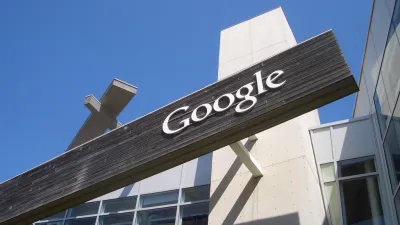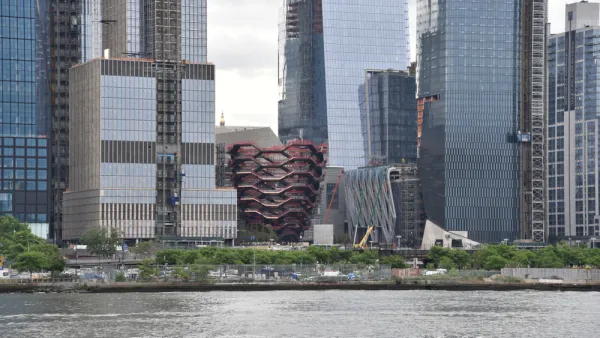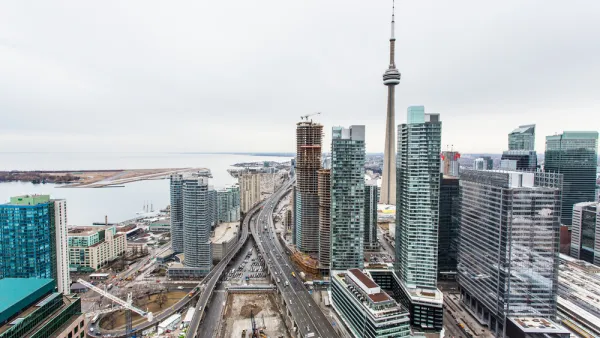Earlier in June, Google announced the creation of an "urban innovation company" called Sidewalk Labs. One writer explains the genesis of the company as well as its potential for the future of how cities operate.

Susie Cagle follows news about the launch of the Sidewalks Labs urban innovation company with context on Google's surprisingly complex history of dabbling in urban planning.
In essence, Cagle identifies Google's efforts to build a city within a city at the location of its headquarters in the Silicon Valley as a test run of the goals for Sidewalk Labs.
Google’s interest in the physical design and function of a city seems born of pragmatism (the necessary logistics of building and running its giant campus), with a vague tinge of eco-friendly progressive ethos. Those traffic jams bring the region to a halt every rush hour—how could a self-driving car make travel more efficient? Those parking lots for thousands of workers are really expensive—how do you get more of them to bike to work instead?
Cagle goes on to describe a dialectic behind the data-driven innovations of the privately owned tech industries with the political realities of the public sphere, in the process targeting Sidewalk Labs as the potential site for a future negotiation of how cities change.
FULL STORY: Google Is Planning to Plan Your City

Analysis: Cybertruck Fatality Rate Far Exceeds That of Ford Pinto
The Tesla Cybertruck was recalled seven times last year.

National Parks Layoffs Will Cause Communities to Lose Billions
Thousands of essential park workers were laid off this week, just before the busy spring break season.

Retro-silient?: America’s First “Eco-burb,” The Woodlands Turns 50
A master-planned community north of Houston offers lessons on green infrastructure and resilient design, but falls short of its founder’s lofty affordability and walkability goals.

Test News Post 1
This is a summary

Analysis: Cybertruck Fatality Rate Far Exceeds That of Ford Pinto
The Tesla Cybertruck was recalled seven times last year.

Test News Headline 46
Test for the image on the front page.
Urban Design for Planners 1: Software Tools
This six-course series explores essential urban design concepts using open source software and equips planners with the tools they need to participate fully in the urban design process.
Planning for Universal Design
Learn the tools for implementing Universal Design in planning regulations.
EMC Planning Group, Inc.
Planetizen
Planetizen
Mpact (formerly Rail~Volution)
Great Falls Development Authority, Inc.
HUDs Office of Policy Development and Research
NYU Wagner Graduate School of Public Service




























